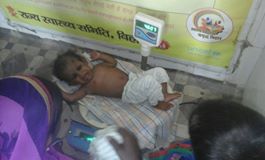2016 at a glance
2016 has been a fun year at Seva Setu. We eagerly look forward to 2017 to bring about changes on ground, Seva Setu style 🙂
Looking back, 2016 was a year of consolidation and introspection at Seva Setu. We were not focused on expanding our services and scaling our operations in different regions. Instead, we were keen on strengthening and streamlining our internal processes. We focused on ensuring the data we collected on the field was rigorously maintained and indexed. We also identified and integrated technology in programs where we thought it would greatly help scaling them. Doing so has prepared us to aggressively expand our portfolio of services in 2017 as well as replicating them across geographies. We want to strongly establish our brand presence as well on the field in addition to having polished operations. 2017 is also the year Seva Setu turns three. With this, we now want to be formally involved with local governments in executing various projects in our areas of expertise. 2016 has thus been a year of preparation for the high amount of activity we hope to see in 2017!
We highlight here some of our posts from the year before –
- Citizen care: We worked primarily on three pension schemes – for the disabled, for senior citizens and for widows. The second half of the year saw our focus shift towards the disabled, and covering three districts in parallel. We learned a good deal about the processes and challenges in ensuring people received their benefits from the government. [Our opinion piece]
- Mother care: After seeing a lull at the beginning of this year, 2016 saw a swanky-revival of its Each one, Reach one program. We got good coverage from the press and got on board urban mothers from varying professions and backgrounds to befriend peers from rural Bihar! We now have a fully automated tool to schedule and manage phone calls. We have begun receiving feedback from urban mothers and are resolving escalations raised by them. [Web-based software] [Press article]
- Child care: 2016 saw a tough year for our Child care program. We fought tooth and nail in ensuring that the NRC in Patna, which was shut down without notice, was reopened in two months’ time. We also faced resistance from families in Patna in going to the centers. On a positive note, most families in Vaishali obliged and realized its significance. Our opinion piece of issues in the current setup also got press coverage. [Related post] [Press coverage]
- IT training: We completed four batches of skill training this year. We were pleased to see the warm response we got from the people of Vaishali in participating in this program. Basic computer literacy as a skill has high returns in our growing knowledge economy. We want to see how we can get those we train employed in local markets. [Related post]
- Audits of public services: We also spent time on auditing existing facilities and liaisoning with the government to rectify issues we had spotted in them. We audited Anganwadi centers – to ensure basic facilities like weighing machines, growth charts etc. were available at the centers; and health centers – health subcenters in villages and block-level primary health centers. The audits of Anganwadi centers led to several fruitful meetings with the CDPOs and the health center audits led to action being taken after we filed complaints with Bihar’s Lokshikayat center. [Health center report]
- Sewing training and creating markets: We continue to operate sewing training centers in which get batches of 20-30 young women trained in sewing and related skills. Towards the end of 2016, we were able to liaise with local vendors in ensuring their produce got into the local markets. We are very optimistic about this program taking off full-steam, given the successful pilots we’ve seen thus far. [Related post]
- Technology and processes: 2016 witnessed an emphasis on technology. By rigorously maintaining internal data stores and making our code-bases public, we restructured our operations to make it amenable to disciplined data collection and analyses. We are now on GitHub and have a dedicated community of 5-6 developers who are involved in designing and maintaining our software-related tools! [Each one, reach one software] [Our live stats from citizen care]
With this, we really look forward to 2017! We thank our team of field executives, employees, and volunteers who’ve worked shoulder to shoulder in getting us here. We think we’re better prepared in facing challenges that this space will throw at us and we’re optimistic that our experience in this domain thus far will help us be more efficient and impactful!
Hello 2017!










 functioning –
functioning –